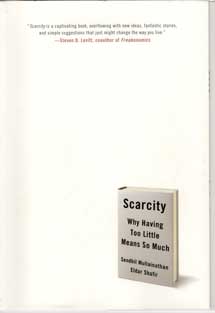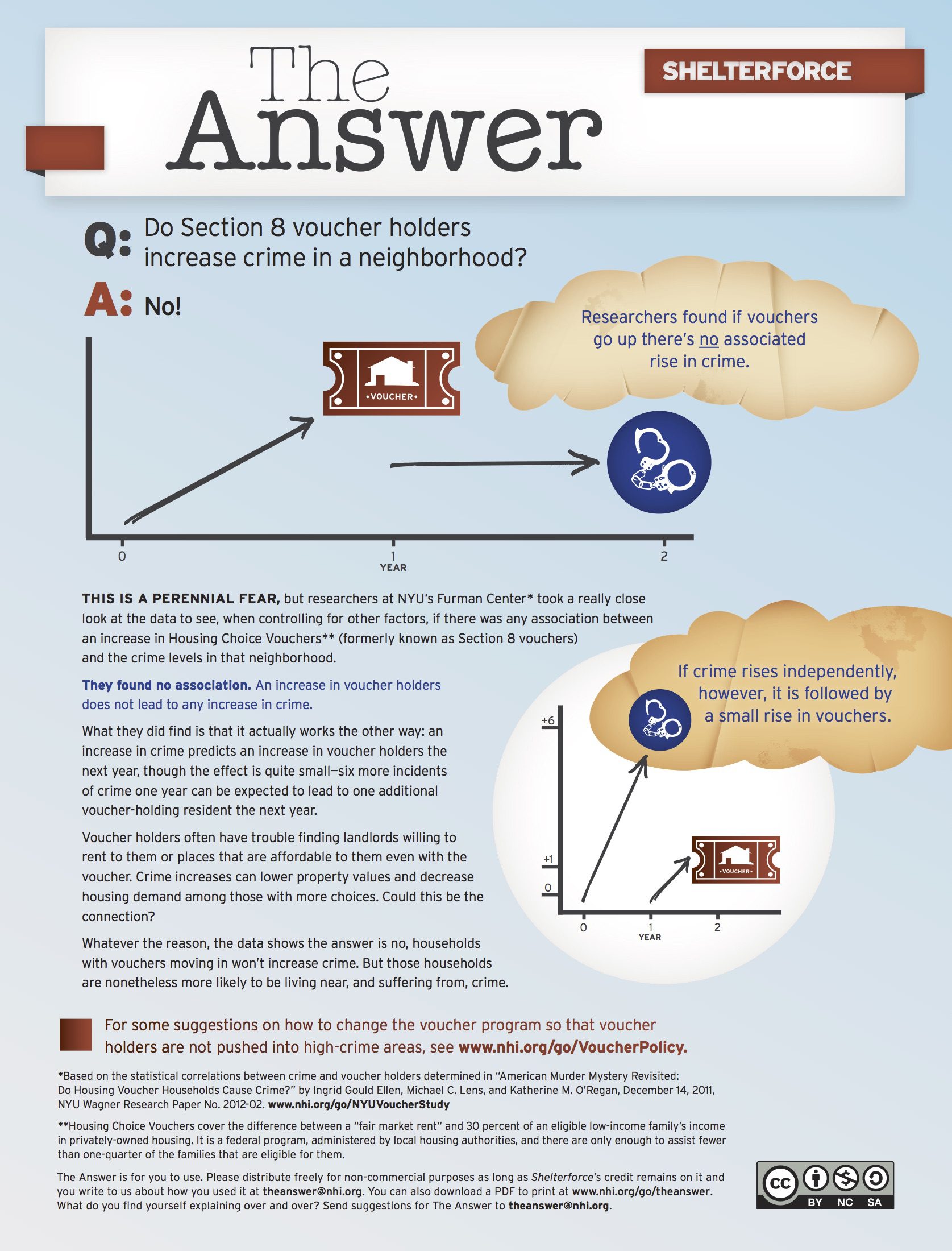It’s not often that you get a new hardcover book in your conference swag. But CFED decided it was worth weighing down the luggage of everyone at their Assets Learning Conference in September with a copy of Scarcity.
I have to say I agree.
In Scarcity, Mullainathan, a behavioral economist, and Shafir, a cognitive scientist, explore how brains react to the experience of scarcity—whether it’s poverty, extreme busyness, or other types of scarcity, such as the enforced calorie scarcity of dieters. (They recognize that poverty is the most important of these, and it is clearly their real target.)
Their conclusion, supported by numerous fascinating research experiments, is that scarcity affects brain function. It has some positives—the focus dividend, what happens when you can suddenly work because of an impending deadline. It’s also the reason many people in poverty are such masters at stretching a dollar. However, it has negative effects as well, from over-focus (which they call tunneling) to dramatic reductions in certain kinds of brain function, including executive function, which allows for self-control and willpower. The authors speak at length about what they call the “bandwidth tax” of functioning under scarcity.
Scarcity would be useful reading for anyone who has been poor, works with the poor, or has opinions about poverty. One of its greatest strengths is the way it describes the experience of poverty in great scientific and conceptual detail without victim-blaming. The authors don’t fall into the trap of blaming poverty on culture, behavior, or inherent deficits, but they also don’t sidestep the fact that many people in poverty exhibit patterns of poor choices and poor cognitive functioning. The authors make a powerful case that these are effects of poverty, not causes.
Since they avoid discussing initial causes of poverty, the book remains fairly apolitical. I imagine this will be a strength, as long as advocates can clearly articulate what its implications are for policy and programs.
Mullainathan and Shafir do touch on the implications of their conclusions for how we should fight poverty, but they present more of a brainstorm than a thorough proposal. They do propose some useful ideas in that brainstorm, such as rethinking the punitive and time-consuming processes for recertifying for public assistance and providing insurance against various kinds of financial shocks.
These things have implications not only for public policy, but for nonprofit and philanthropic strategies. For example, they challenge the way financial education and counseling are frequently used. As the authors note regarding financial education: “Our first response to many problems is to teach people the skills they lack. . . . Faced with financial mistakes . . . we provide financial education classes. Faced with employees whose social skills are lacking, we offer “soft skills” classes. We treat education as if it were the least invasive solution, an unadulterated good. But with limited bandwith, this is just not true.” (174)
I think there’s an opportunity here to take the conclusions of the research written up in Scarcity—along with those from the Financial Diaries project about how people’s financial lives really work on a day to day basis—and draw up a new manifesto on how we fight poverty.
I can imagine this research giving momentum to something similar to the Housing First model for ending homelessness, which recognizes that providing stable housing before offering other types of services (from addiction recovery to job searches) enables better success—and substantial cost savings.
Perhaps the analogous model would be called Security First. It would argue that a basic level of economic security, including ways to mitigate the economic shocks that tend to disrupt journeys out of poverty, is a prerequisite for things like improved workforce development, educational attainment, and forward-looking financial planning, not a consequence of it.
Rather than treating poverty as a motivator, we need to realize that removing the worst of the scarcity effect would release amazing amounts of potential and productivity, which would be good for everyone. Scarcity could be a powerful tool for making that argument.
Scarcity is available for purchase through Powell’s here.






Thanks for featuring this important work! I read Scarcity several months ago and my head has been spinning ever since with thoughts of the implications for working with low and moderate income people. The realization that “bandwidth” is a scarce resource that we must account for in program design/delivery is central! The fact that they show comparable phenomena in brain function and behavior whether the scarcity is around money or time or calories also makes this book accessible to a wide audience, including some folks who might not realize how much they have in common with their low/mod income neighbors! It is a powerful tool for our work!